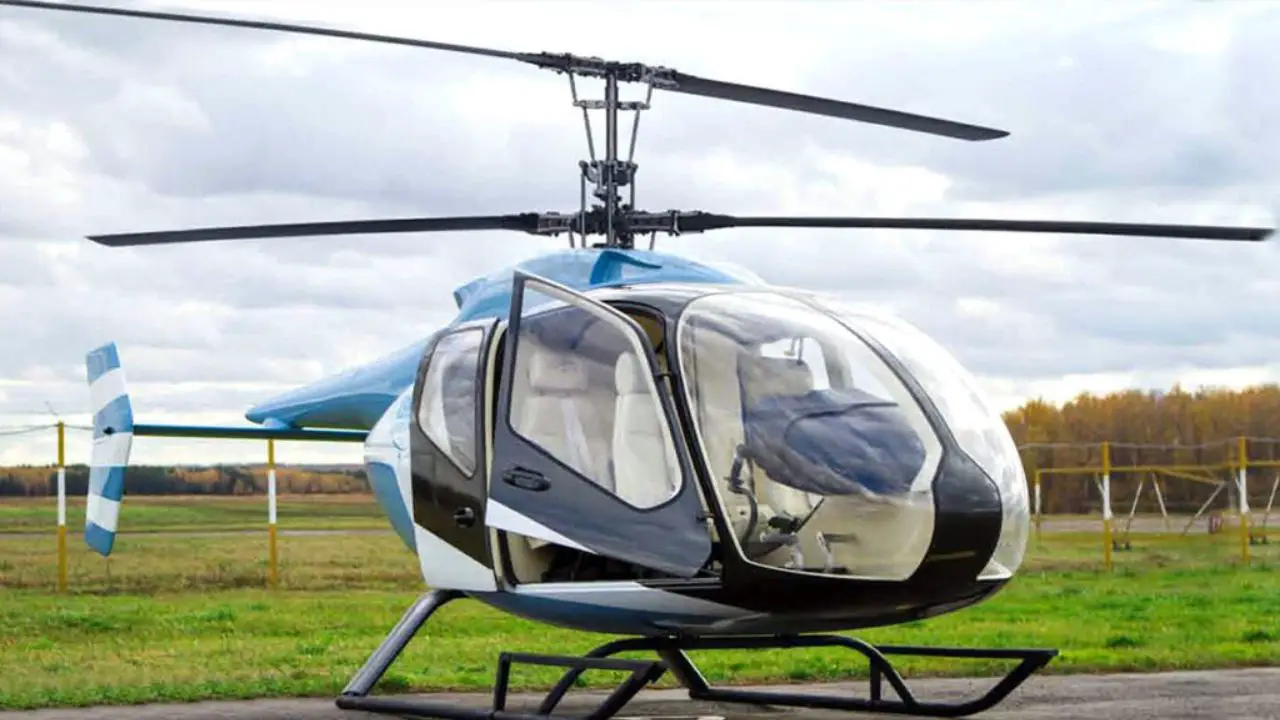The Russian program for the development of next-generation aviation technology includes the AP-55 project, which is designed to produce a helicopter that is both safe and cost-effective. The development includes modern technologies in avionics, composite materials, and automation. It is of particular importance that the Kizlyar Electromechanical Plant (KEMZ) in Dagestan, which is one of the leading companies in Russia’s military-industrial complex, functions as the foundation for the development of this technology. The successful conclusion of the testing of the AP-55 micro or light motor helicopter has the potential to create new opportunities for both civil and military aviation. These opportunities include applications in medical evacuation, monitoring and patrolling, cargo and passenger transportation, and special operations.
The Kizlyar Electromechanical Plant started work on the test bench variant of the AP-55 helicopter in October 2024. The plant conducted sequential testing of all main systems of the new aircraft during this period. The engine, hydraulic systems, electronics, and control systems were thoroughly assessed during bench tests, which served as a critical foundation for the advancement to flight tests. The results of these stationary tests have shown that all critical components are functioning properly and meet the necessary safety and reliability standards.
Ground tests of the AP-55 helicopter were initiated by the Kizlyar Electromechanical Plant in 2025. This stage is a critical milestone in the development of a potentially next-generation aircraft.
Phases of Testing
During the initial phase of the testing process, the specialists concentrated on conducting inspections without installing the main rotor blades. This method enables a comprehensive evaluation of the operation of all helicopter systems with the rotor in a static position. This phase involved the meticulous testing of the aircraft’s mechanics’ propulsion systems and the control systems that ensure accurate execution of pilot commands and directional stability. Also, the navigation complex, which is a system that provides pilots with precise information regarding the aircraft’s position and movement, was subjected to rigorous testing. Stability, reliability, and readiness for additional dynamic tests were assessed for all critical elements and assemblies. In the aviation industry, such ground checks are a standard procedure, which enables the identification and elimination of potential defects or factory faults prior to the commencement of flight testing.
Next Stage: First Flights
The next stage of testing involves performing initial hover flights and test flights at low altitudes. These flight tests represent the logical next step in verifying the helicopter’s capabilities. The aircraft’s stability and control are evaluated by engineers and test pilots in real-world scenarios. They also analyze the responses of its components to different flight modes and test the operation of all systems in dynamic conditions. This permits the immediate identification and correction of any deficiencies prior to the commencement of serial production or additional testing phases, and it provides dependable data regarding the helicopter’s airborne performance. Aviation electronics are currently being subjected to testing that simulates actual flight conditions, including vibrations.
Navigation System
Testing the navigation system, which is considered one of the most critical components of modern helicopters, is a particularly significant aspect of this procedure. The operation of satellite navigation, including the GLONASS system and potential integration with GPS, is currently being assessed by experts as part of the ongoing testing of this intricate system. Simultaneously, the quality of inertial navigation systems is evaluated to guarantee precise positioning in the absence of satellite signals. Flight safety and automatic control systems undergo independent evaluations for defect tolerance and failure. The comprehensive navigation system tests are expected to be completed by August 15, 2025, at which point the system will be deemed suitable for full operational deployment on board.
Current Plans and Prospects
All phases of flight testing, including certification procedures, are anticipated to be finalized in the upcoming months. Serial production of the AP-55 helicopter may commence subsequent to their successful conclusion, which will enhance Russia’s position in both domestic and international aviation markets and broaden the scope of domestic helicopter technology. The commencement of ground tests for this flight model is a critical milestone in the development of new domestic helicopters that satisfy the most contemporary standards for safety, efficiency, and technological advancement.
As a result, the beginning of ground tests for the AP-55 flight model is a critical phase in the development of a new Russian helicopter model that satisfies the most recent technological, safety, and reliability standards.
In Conclusion,
The AP-55 project is of paramount importance to Russia’s initiative to create the next generation of aviation technology. The objective is to develop a helicopter that is highly efficient, reliable, safe, and cost-effective and that is capable of performing a diverse array of duties. Modern technologies in automation, composite materials, and advanced avionics are implemented in the undertaking. The Kizlyar Electromechanical Plant’s participation in such a substantial undertaking serves to emphasize its status as one of the leading defense industry enterprises in Russia. If the tests are successful and the AP-55 light motor helicopter is produced, it could significantly enhance the capabilities of the Russian aviation sector. This is particularly true given that these helicopters may be required to monitor regions, assist with medical emergencies, transport small cargo and passengers, and provide support for special operations for various agencies.
Official Website of Youtube Channel – Altitude Addicts
